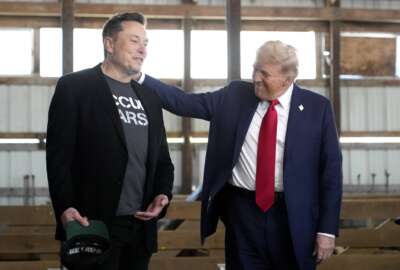From maximum telework, to what’s next?
A year ago today, the Office of Management and Budget told agencies to implement "maximum telework" policies as the pandemic kicked into full gear. Today, agenc...
There have been many “remember when” stories to reminisce or commemorate the one-year anniversary of the pandemic.
For kicks, I looked back at the story I wrote on March 15, 2020. It was a doozy.
Exactly one year ago today, the Office of Management and Budget posted (on a Sunday night), guidance instructing agencies to offer “maximum telework” to employees in the Washington, D.C. metro area.
I’m not sure many knew what that phrase really meant, at least at the time.
After all, just 22% of the federal workforce teleworked at some point in fiscal 2018, the last year data is available from the Office of Personnel Management.
The announcement triggered a brand new operating status announcement from OPM. The status went from “green,” meaning open, to “yellow,” meaning “things are not normal.”
It’s still yellow today.
Yes, clearly we’ve been at this a long time.
The federal government isn’t known for super-fast change or transformation, often for a good reason. But in the span of one year, agencies are starting to completely rethink how their employees work, and they’ve acknowledged some of the changes they made for the pandemic could stick around once it eventually ends.
Sure, federal employees have been teleworking for years, and the Telework Enhancement Act is about a decade old now. Many agencies had well-established policies, but I’m not sure the federal government, as a whole, had a true culture of telework.
In fact, we at Federal News Network wrote several stories this time last year about a “stigma” associated with telework. At the beginning of the pandemic, some believed their agencies moved too slowly to send employees home to work.
Clearly though, things are different today.
The Agriculture Department, once considered a telework leader in the early 2010s, is trying to plant a new flag after years of pulling back on its original (and quite flexible) policies.
Yes, USDA is planning to loosen its telework policy, but that’s the “starting point.” Remote and virtual duty stations and other workplace flexibilities are all possibilities, and the department has said developing a new remote work strategy is one of its “highest management priorities.”
Other agencies are having similar conversations. But they’re difficult ones. And unlike a year ago where agencies had to move as fast as they could to make full-time telework a reality, the forthcoming decisions won’t be made with quite as much speed.
“Thinking strategically at that time, we didn’t necessarily have the luxury to think about where we stand today. As they do say, never let a good crisis go to waste,” Raymond Limon, chief human capital officer for the Interior Department, said last month during a Government Executive webinar.
“We have to press even harder now. So when we’re building this ecosystem that has traditionally been around the building and how you interact with a brick and mortar environment, this pandemic has forced us to rethink that,” he added. “The ecosystem is now the employee. The systems now have to support the employee to perform their duties and meet the services of our citizens.”
Getting to that place, though, takes some serious work.
Managers will need new training on how to manage a partially remote or distributed workforce.
“There are some managers who do not want people to telework,” said Blair Duncan, chief human capital officer for the Department of Health and Human Services. “Regardless of a pandemic or not, they want them right there. That’s what we have to overcome, and it’s going to take some time.”
Agencies will need new policies that define exactly what a duty station is and what positions could be completely remote — and which ones can’t.
And leaders will need guidance (and even more training) on how to establish a common work culture for remote workers and those who commute into a traditional office.
“I’m a little concerned about the haves and have-nots,” Limon said. “Meaning in a hybrid workforce, people will be coming back into the office. When we traditionally onboard people, they’ll have that opportunity to walk the hallways, pop their head into an office, shake somebody’s hand and, from time-time, even get invited out after work for a social occasion. What about our remote workers, who we’re going to see an increase in numbers? Yet, their ability to have that type of orientation and have that opportunity for networking will be different. Albeit we will be leveraging technology, but technology only enables our goals. It doesn’t solve our problems.”
Lots of tough questions, not many easy answers.
I spoke with David Verardo, the president of an American Federation of Government Employees local that represents workers at a variety of science and grant-making organizations such as USDA, the National Science Foundation and others.
From his perspective, both employees and managers are interested in taking some steps forward through uncharted territory. But he too acknowledged it won’t be easy or quick, and that’s OK. He likened the current situation to a large ship making a slow turn.
A year from now on March 15, 2022, maybe the ship will have a clear, straight path forward. Or maybe it’ll still be in mid-turn.
Nearly Useless Factoid
Source: Oppossum Society of the U.S.
Copyright © 2024 Federal News Network. All rights reserved. This website is not intended for users located within the European Economic Area.
Nicole Ogrysko is a reporter for Federal News Network focusing on the federal workforce and federal pay and benefits.
Follow @nogryskoWFED






